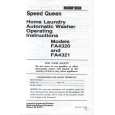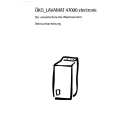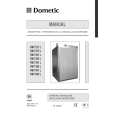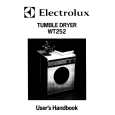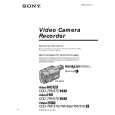|
|
|
Kategorie
|
|
Informacje
|
|
Polecamy
|
|
|
 |
|
|
Dla tego produktu nie napisano jeszcze recenzji!
 ;
Bardzo dobra jakość skanu, przystępna cena. Instrukcja serwisowa okazała się przydatna przy "reanimowaniu" dwudziestoparoletniego decka, który teraz pięknie gra :)
 ;
...instruction is ok.
...instrukcja jest ok.
Thanks/Dzięki
 ;
Documentation made available quickly and It is good quality. Thanks.
2. Case Study In many cases, color matching problems can be solved by returning the HIT and WID data for main deflection to the initial adjustment values. Convergence cannot be re-adjusted in the following cases. 2-1 When the CRT has been replaced Main deflection re-adjustment and color matching are necessary when the CRT has been replaced. Use the following procedure. 1. Replace the blue and red CRTs. 2. Perform the blue and red yoke horizontal adjustments in relation to the green CRT. Press the yokes and speed modulation coils + alignments onto the CRTs and fasten after making sure that there are no gaps. 3. Adjust the blue and red alignments (refer to the detailed alignment adjustment item). 4. Use centering magnets to center the blue and red CRTs in relation to the green CRT. 5. Adjust the main deflection HIT and WID data, using the most accurate location in relation to the green as data. 6. Use convergence to match the colors for each screen. Green will not work at this time. 7. When the convergence adjustments have been completed for all screens, then replace the green CRT. Repeat the procedures in steps 2 - 5 for the green CRT but this time use convergence to match the colors using red and blue as reference. 2-2 When replacing the convergence unit Generally, all of the screens must be re-adjusted when the convergence unit is replaced, but the process can be greatly shortened by using the following method. 1. Replace the memory (Q711, Q712, Q713) of the new unit with the memory (Q711, Q712, Q713) of the defective unit. This makes it possible to quickly reproduce the previous screen status when installed in the set. 2. Install the new unit with the old memory in the set and turn on the power. The entire screen will move linearly in either the vertical or horizontal direction. 3. Use centering magnets to re-adjust the green, red and blue centers. 4. There is possibility of color mismatching or differences in screen size when the various screens are checked. In such case, adjust the main deflection and apply a slight amount of convergence color matching. 2-3 When none of the above cases apply (rare case) An unexpected situation or major operational error, etc., could be considered but it is recommended that all screens be matched starting from the beginning. If the initial positions of the centering magnets are unknown, disconnect the connectors for the convergence sub-yoke outputs one at a time, adjust the CRT centering and then start the following adjustments. 1. Make sure that there is plenty of room for the static cross convergence to be moved left, right, up and down. If sufficient space is not available, move to an appropriate location and then re-adjust the centering. 2. Enter the convergence adjustment mode and call out the menu. (Leave the PAL signal connected.) 3. Select 1. Adjust PAL Wide and adjust the PAL mode Wide/4:3 screen manually in accordance with the dimension diagram. 4. When the Wide/4:3 screen adjustment has been completed, return to the Main Menu and select 2. PAL Wide to others. The screen will change automatically and the Wide, Cinema and Subtitle screens will be created automatically. 5. Next, select 3. Adjust PAL S.Live and mainly adjust in the horizontal direction in accordance with the dimension diagram. 6. Next, select 4. Adjust PAL Cinema and fine adjust to remove any Cinema screen distortion. 7. Next, select 5. Adjust PAL Subtitle and fine adjust to remove any Subtitle screen distortion. 8. Next, select 7. PAL to NTSC (ALL), then calculate and copy the data for all PAL screens in the NTSC mode. At this time, the calculations and screen shape changes will be performed automatically and the NTSC screen data corresponding to the PAL screens will be transferred. 9. Select in sequence 8. Adjust NTSC Wide, 10. Adjust NTSC S.Live, 11. Adjust NTSC Cinema and 12. Adjust NTSC Subtitle, check the respective NTSC screen modes and, if necessary, adjust for any distortion. All of the screens can be adjusted with the above process but make every effort not to change the factory data unless absolutely necessary. Try not to change the convergence data any more than necessary.
� 19 �
SPECIFIC INFORMATIONS GENERAL ADJUSTMENTS
 $4.99 50WT29B TOSHIBA
Schematy Zestaw schematów dla tego urządzenia. Plik PDF zawierający schematy będzie dostarczony na Twó…
|
|
 |
> |
|
